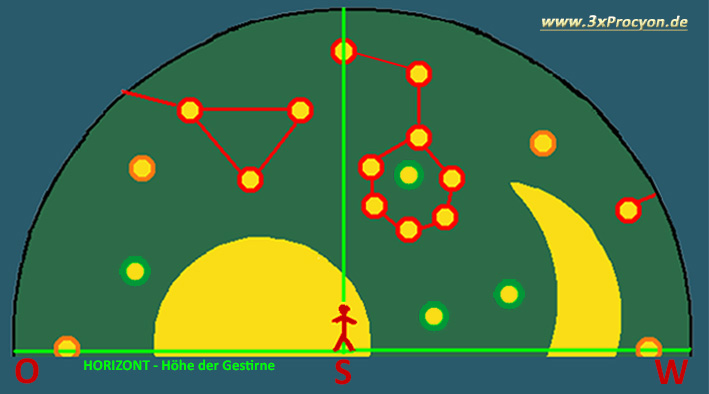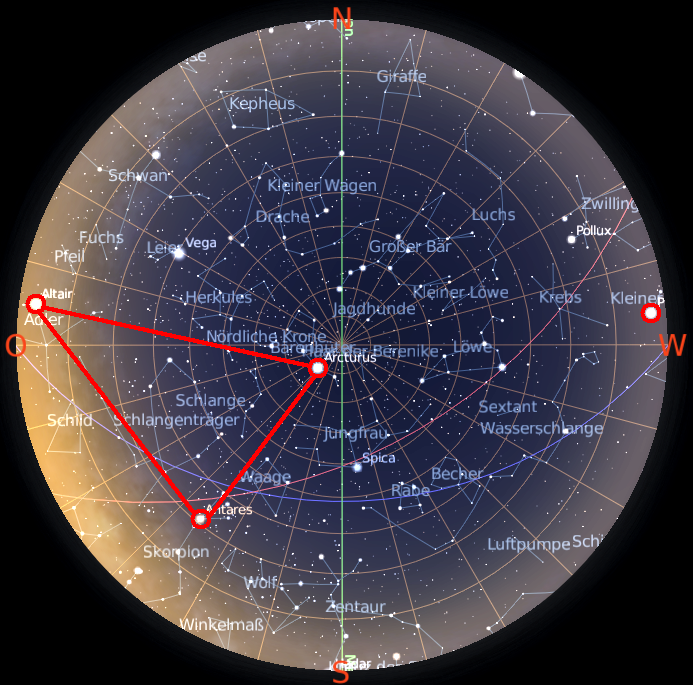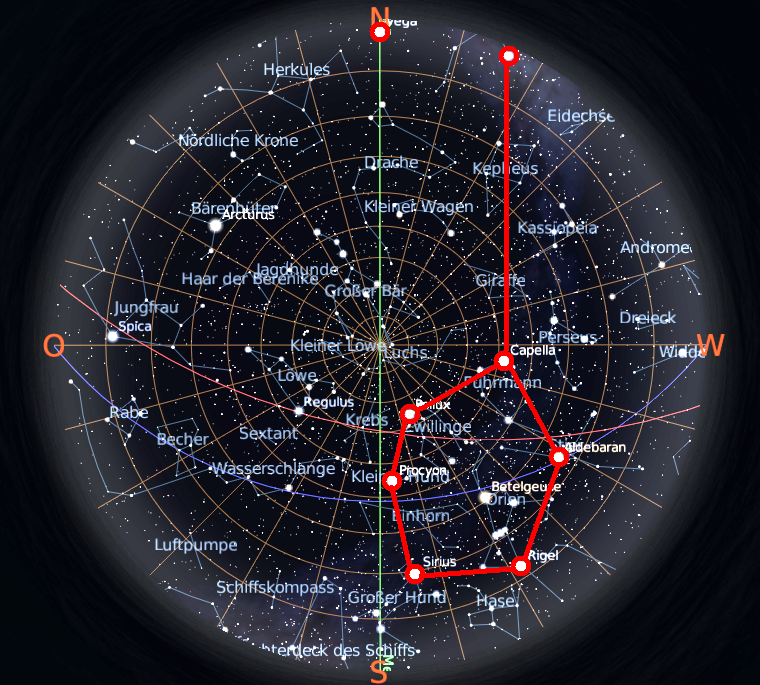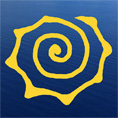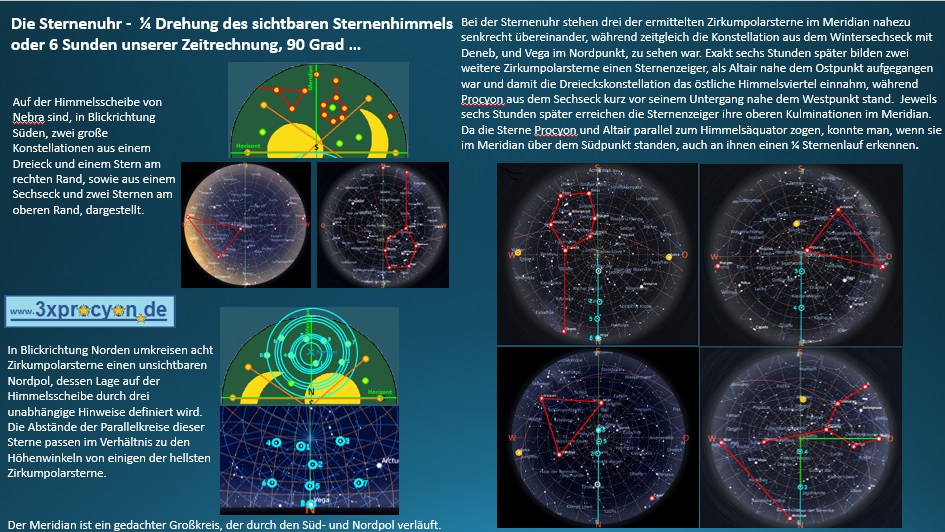 .
.
Auf der Himmelsscheibe von Nebra sind der versetzte Stern im Ostpunkt und der goldene Stern, für den wir Polaris ermitteln konnten, die beiden einzigen größeren Sternenscheiben.
Denn, wenn in der Himmelskarte 4 Polaris / Kleiner Wagen in der oberen, südlichen Kulmination stand, bildete er mit 3 Alkaid / Gr. Wagen einen Sternenzeiger und genau im Osten war zeitgleich wieder einmal Procyon zu sehen (siehe nachfolgende 4. Himmelskarte) !
Auch drei weitere, der ermittelten, Zirkumpolarsterne (2 η- Drache, 5 Etamin / Drache + 8 Vega / Leier) bildeten annähernd einen Sternenzeiger über dem Nordpol.
Verfolgen wir den zeitlichen Ablauf dieser beiden Sternenzeiger vergingen zwischen den vier Stellung jeweils genau 6 Stunden oder 4x 1/4 Himmel. Und sie sind ein Teil unseren Konstellationen mit dem Sechseck oder Dreieck.
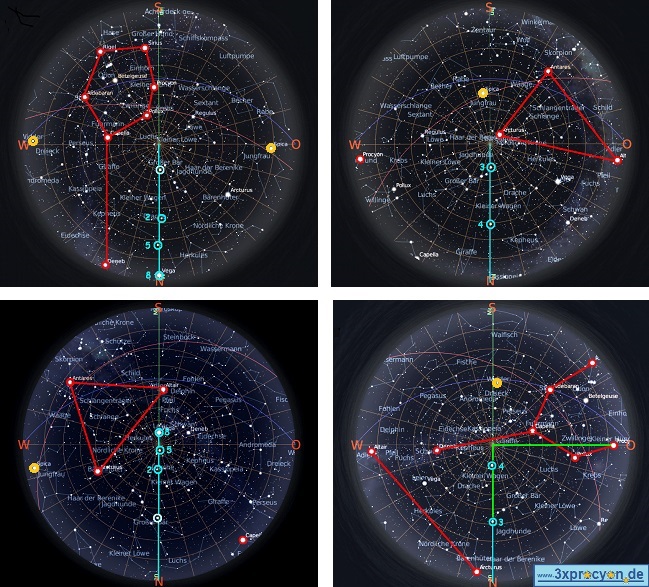 Der Schöpfer der Himmelsscheibe hatte den Mechanismus einer kompletten Sternenuhr entdeckt, die einen Tag theoretisch in vier gleiche Teile teilen konnte. Allerdings überstrahlte das Sonnenlicht je nach Tageslänge zwei oder auch drei Sternenzeiger, so dass manchmal nur ¼ Himmelsdrehung beobachtet werden konnte.
Der Schöpfer der Himmelsscheibe hatte den Mechanismus einer kompletten Sternenuhr entdeckt, die einen Tag theoretisch in vier gleiche Teile teilen konnte. Allerdings überstrahlte das Sonnenlicht je nach Tageslänge zwei oder auch drei Sternenzeiger, so dass manchmal nur ¼ Himmelsdrehung beobachtet werden konnte.
Dem Stern Procyon können wir 3x verschiedene goldene Sternensymbole eindeutig zuordnen:
Procyon ist einmal kurz nach seinem Aufgang im Osten (großes Goldelement als der Teil Sternenuhr), einmal kurz nach seiner Kulmination neben dem Meridian (im Wintersechseck) und einmal kurz vor seinem Untergang im Westen (gegenüber der Dreieckkonstellation) dargestellt, obwohl wir dem östlichen Symbol schon zuvor einem anderen Stern zuteilen konnten! Demnach ist hier eine Mehrfachbelegung gegeben und dies ist dann auch für andere Element nicht auszuschließen!
Nun hatten wir im Beitrag zuvor den Sternenzeiger zur Bestimmung des wahren Nordens, aus zwei der acht Zirkumpolarsterne der Himmelsscheibe, kennengelernt. Zur Sternenuhr gehören weitere fünf Sterne und somit haben wir nur für den Stern Alphekka, aus der nördlichen Krone, bisher noch keine Bedeutung gefunden.
Mehr dazu: Eine komplette Sternenuhr

